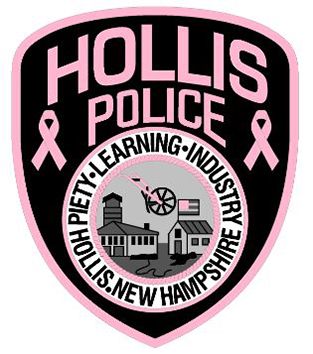Bike ride, walk in Hollis to benefit Franklin Park Zoo
BOSTON – The girls were thrilled and didn’t waste a second: As soon as they were through the entrance to the Franklin Park Zoo – leaving their parents behind – they spotted the zebras and wanted to go there instantly.
So we did, leaving their parents to catch up.
The girls – Joely, 8, and Anna, 5, – were there to help us understand what had attracted Jonathan Gilmour to the zoo and to help us explain why the upcoming annual Jonathan Gilmour Fund Bike Ride and Walk in Hollis is so important.
What we learned was this:
? Take kids to a zoo, probably any zoo, and they’re going to have fun.
? The money raised by the annual ride and walk goes to a wonderful purpose.
The fifth annual Gilmour event will be held Saturday, May 12, starting and ending at the Lawrence Barn on Depot Road.
The Hollis event features multiple routes that are specially designed for cyclists or walkers ranging from beginner to expert, and culminate with a barbecue for riders and volunteers, as well as their families and friends.
Proceeds will support Zoo New England’s Jonathan Gilmour Memorial Scholarship Fund, but particularly Franklin Park Zoo, where Gilmour worked until his death at age 29.
Joely and Anna knew nothing about the ride or walk or anything about Jonathan. All they knew was they hadn’t been to this zoo in several years and they wanted to see … everything.
The zebra, Joely said, had been her favorite animal because, when she was younger, she thought it was the only one with stripes but then she learned that the tiger had them, too. So, of course, we had to race off to see the tiger. Almost. First we had to stop and commune with the ostrich and find out from Joely, who is in the second grade at Wilkins School in Amherst, that the ostrich’s eyes are bigger than its brain.
When we got to the tiger, we discover it was white, but no one seemed to mind, although the girls were more impressed by the lion because, for some reason, it decided to roar. Several times.
Anna asked, “Where’s his wife?”
We didn’t know.
Of course the girls noticed that all of the animals were in enclosures of some kind, all of them roomy of course, but Anna still said to a large bird called a kori bustard, in a large area with no roof:
“You could be free. You could fly out if you open your wings.”
And when she say a cotton tamarin, she said: “They don’t really have anything to do.”
The hit of the day, not only for us but for, it seemed, everyone, was the gorillas – baby and toddler gorillas who were only inches away from the same-age humans who peered through the glass. Thee little primates seemed to be having a great time showing off.
A zoo volunteer named Roy, said of the youngest: “She causes a lot of trouble. She runs around biting everybody,” meaning her siblings, when she doesn’t want to take a nap.
Even an adult visitor commented that “I’ve been to a lot of zoos – the Bronx, the Philadelphia – but this was the best because of the gorillas.”
The girls also had a good time in the aviary, holding sticks with bird food that attracted individual budgies and small swarms of the birds.
Another hit was the baby kangaroo. It is 7 months old but the zoo doesn’t yet know if it’s male or female because a close examination hasn’t been done. When the kangaroo, named “Joey,” was born, it was only the size of a jellybean and crawled right into its mom’s pouch to suckle. Now it’s out and about.
There were some adult kangaroos, too, a couple of them acting up a bit, causing Anna to ask, “Why is that kangaroo riding that other kangaroo?”
I left that to her parents, Dean and Wendy.
This is the 100th anniversary of the Franklin Park Zoo and the fifth year of the Gilmour ride and walk. The money raised goes to scholarships for zoo employees to further their studies.
Among those who have benefited are Erica Farrell and Dr. Susie Bartlett. Farrell participated in a project with a forest baboon species in Nigeria. Bartlett, the zoo’s associate veterinarian, trained in small animal endoscopy last year.
“It’s a very useful tool for a vet,” she said. “A lot of times (an exam) gives us an idea of what may be ailing the animal but doesn’t tell exactly what’s wrong. Using an endoscope with minimally invasive procedure, we can see more.”
The Gilmour scholarship was important, she said, “because it really does enhance my professional development. The course is expensive enough that it would have been difficult for me to afford it on my own.”
Farrell, the lead keeper at the tropical forest, used the scholarship to help her pay for a plane ticket to Nigeria where she volunteered for six months working with the endangered monkey species.
“It definitely gave me a little more experience as far as animal life goes,” she said. “I got to see them in a more wild atmosphere, see their behavior and social structure.”
My little friends Anna and Joely didn’t know about the scholarships, but running through the zoo, looking at the results of the work put in by people like Bartlett and Farrell, they certainly derived the benefits.

